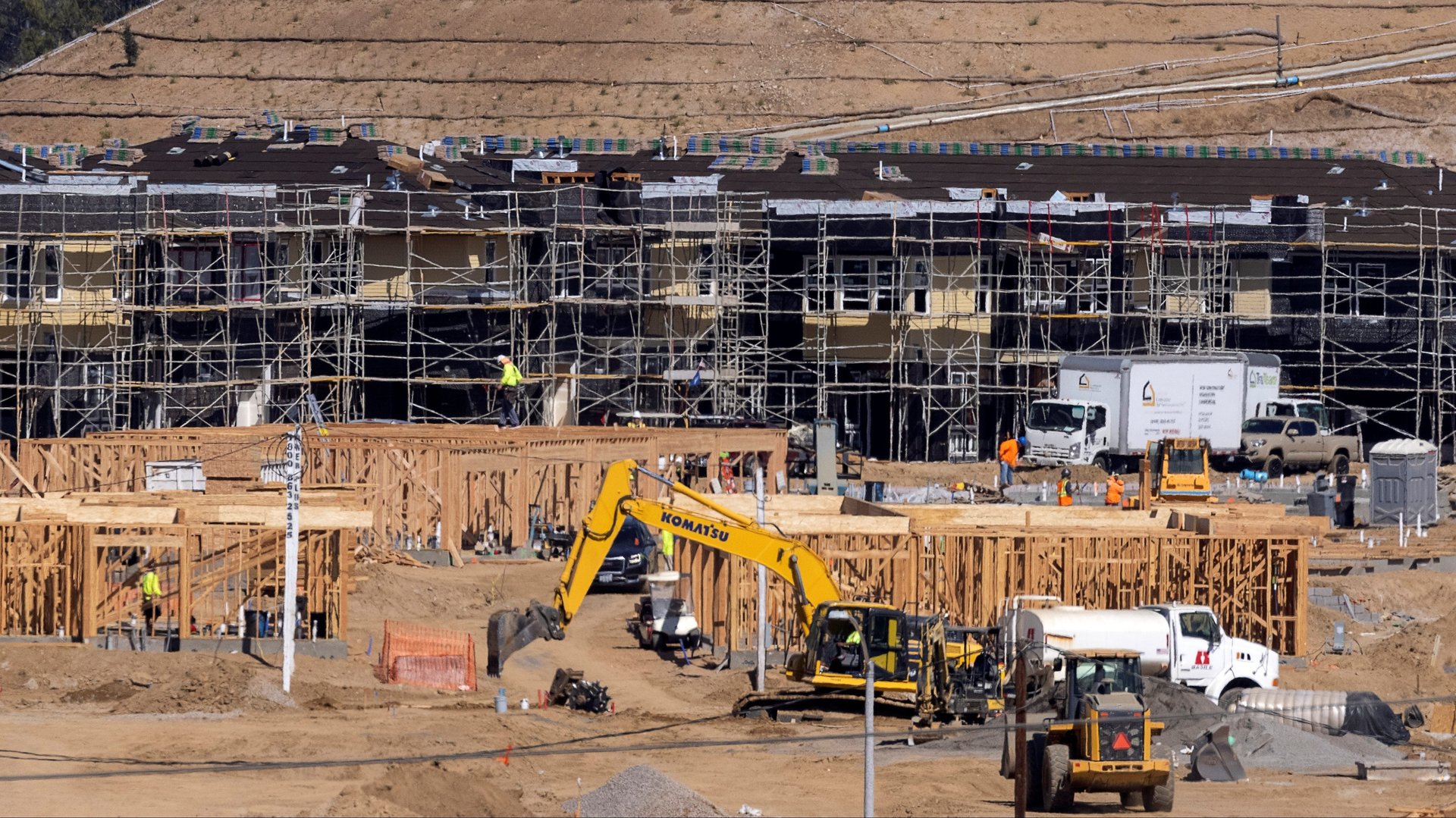US home builders can’t get houses up fast enough to meet demand
Construction of new homes across the US decreased slightly in October even as demand continued to grow. The latest US Census Bureau report on new construction shows that work started on residential construction dropped by 0.7% compared to September while new permits issued for future construction grew by 4%.


Construction of new homes across the US decreased slightly in October even as demand continued to grow. The latest US Census Bureau report on new construction shows that work started on residential construction dropped by 0.7% compared to September while new permits issued for future construction grew by 4%.
Labor and material shortages are now the bottleneck in the housing market. The gap between housing demand and construction capacity is widening due to supply chain and labor constraints kicked off during the pandemic. A surge of demand for new homes from people looking to change their living situation in the pandemic sent the price of lumber soaring in May of 2021, and made it difficult for builders to get other materials such as steel, aluminum, and electrical supplies. Months later, there are still shortages and delays.
“Sometimes it’s everything including the kitchen sink,” says Robert Dietz, chief economist at the National Association of Home Builders. “Costs are higher and delivery times are longer.”
This October marks third time in five months number of new houses under construction declined, ever as indicators show pent-up demand. The number of new permits issued for homes rose, along with the number of homes permitted in 2021 that haven’t started construction. This October, the number of permitted-but-not-yet-started homes was 259,000 units—the highest it’s been since 1978.
For potential buyers, the backlog makes homes more expensive. Fewer new houses adds even more pressure on housing prices, up more than 20% in the past year, while existing home inventory remains low. “Usually you’d say, ‘if there isn’t enough inventory, the construction industry will provide the rest,’ but the challenge is, we already went into this pandemic constrained by labor and land,” says Dietz.
That’s prompted residential construction companies to pull back on sales. D.R. Horton, the US’s largest home construction company, explained to investors at its latest shareholder meeting on Nov. 9 that they intentionally slowed the pace of sales in late 2021 to account for slower construction. They expect supply constraints to be resolved “at some point” in 2022. The company brought in $27.8 billion in revenue in 2021 and is projecting roughly $33 billion in revenue for 2022.
Some economists expect the market to cool off in 2022 as more housing comes online and higher interest rates ease demand. But supply is so constrained, it will be years before the market is rebalanced. Last month, 78,000 affordably-priced homes were put on sale, but it’s only beginning to add to the affordable housing stock which plummeted during the pandemic. With lingering supply chain and labor issues, builders can’t build homes much faster.